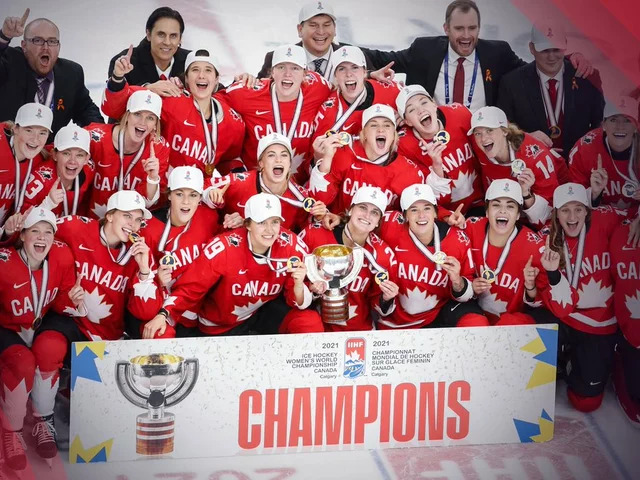
The Rules and Regulations of Hockey: A Comprehensive Guide
Hockey is an exciting game that has been around for centuries. It is a team sport played on ice with sticks and a rubber puck. The game is governed by a set of rules and regulations that dictate how the game is played and how teams score. Understanding the rules and regulations of hockey is essential for any player or fan to truly enjoy the game.
Equipment
Hockey players must wear protective equipment such as skates, helmets, gloves, and other protective gear. The stick must also be a certain length and weight, and the puck must be of a certain size. Properly fitted and maintained equipment is important for the safety of the players.
Players and Substitutions
Each team must have six players on the ice at one time, including a goaltender. The team is made up of three forwards, two defensemen, and a goaltender. Teams can make substitutions during the game, but there is a limit to the number of times a team can make substitutions in a game. If a player receives a penalty, the team can make a substitution for the player.
Playing the Game
The objective of the game is to score more goals than the opposing team. Players must use their sticks to pass, shoot, and control the puck. The game is played in three periods of 20 minutes each, with a 15 minute intermission between periods. If the score is tied after the three periods, the game will go into overtime.
Penalties
If a player commits a violation, the referee will assess a penalty. Penalties can range from a minor penalty, which results in a two-minute penalty, to a major penalty, which results in a five-minute penalty. If a player receives three major penalties in one game, they will be given a game misconduct and will be ejected from the game. There are also other types of penalties, such as a misconduct penalty, which results in a 10 minute penalty.
Scoring
A goal is scored when the puck crosses the goal line completely. If the puck is deflected off of a player’s body, it still counts as a goal. A goal is worth one point, and teams can also score points by shooting the puck into the goal from outside the blue line. Other points can be earned through penalties and overtime.
Overtime
If the score is tied after the three periods, the game will go into overtime. Overtime can be sudden death or the three-on-three format. In sudden death, the first team to score a goal wins the game. In the three-on-three format, each team has three skaters and a goaltender. The first team to score wins the game.
Exploring the Physical and Mental Aspects of Hockey
The nature of hockey is both physical and mental. As a fast-paced, intense sport, hockey requires players to be in peak physical condition in order to excel. The game is played on ice, so players must be able to skate well and have strong endurance and balance. They must also be able to handle the puck well and be able to shoot and pass accurately. As a team sport, players must be able to work well together and understand each other’s strengths and weaknesses.
When it comes to the mental aspect of hockey, players must be able to think quickly and anticipate the movements of their opponents. They must also be able to make decisions on the fly and read the play in order to make the right decisions. Additionally, they must be able to stay focused and composed in a game that can go from one end of the rink to the other in a matter of seconds.
Hockey players must also have a level of mental toughness. Hockey is a physical game and players must be willing to put in the effort and compete at a high level despite the physical demands of the game. This means not backing down from a challenge and being willing to put in the extra effort when needed.
The nature of hockey is one that requires a combination of physical and mental abilities in order to excel. Players must be in peak physical condition, able to skate well and make quick decisions, while also having the mental toughness to keep their focus and composure in a fast-paced game. Only by mastering both aspects of the game can players hope to succeed in hockey.
The History and Evolution of Hockey: A Look Back
Hockey is one of the oldest and most beloved sports in the world. It has a rich history and has been evolving since its inception, transforming into the game we know and love today.
Origins of Hockey
The origins of hockey are a bit of a mystery, but it has been traced back to Ancient Egypt, where drawings of men playing a form of the game have been found. It is believed that the game was then brought to Europe by the Romans. The modern game of hockey is believed to have been invented in Scotland in the mid-19th century.
Early Development
The first organized hockey game was played in Montreal, Canada in 1875. From there, the game spread throughout the country. The first professional hockey team, the Montreal Wanderers, was established in 1906. The National Hockey League (NHL) was formed in 1917, and the first Stanley Cup was awarded to the Montreal Canadiens in 1918.
Evolution of the Game
The game of hockey has undergone numerous changes over the years. In the early days, teams were composed of seven players, and the game was played on a grass field. Today, teams are composed of six players, and the game is played on a rink of ice. Equipment, such as the hockey stick, has also undergone changes over the years.
Modern Rules and Regulations
Today, the rules and regulations of the game are set by the NHL. These rules dictate the size of the rink, the number of players on a team, the types of equipment that can be used, and the duration of the game. The rules also dictate the penalties for various infractions and the type of uniforms that players must wear.
Conclusion
The game of hockey has come a long way since its inception. It has evolved from a simple game played by a few to a full-fledged professional sport that is loved by millions. While the game has changed in many ways, its core principles remain the same: teamwork, skill, and a passion for the game.


